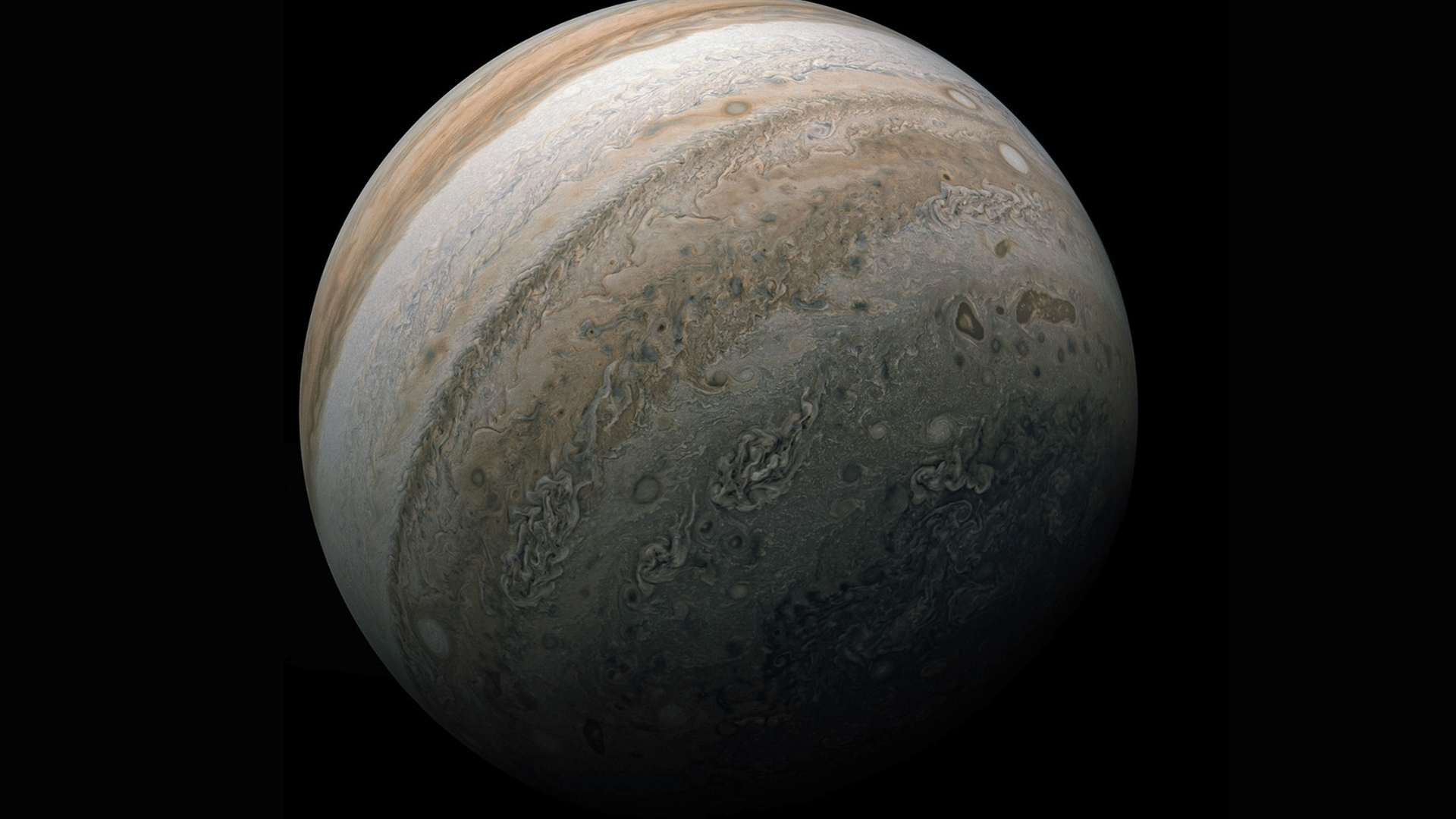Jupiter is one of the most breathtaking sights in the night sky.
When you point a telescope toward it, the bright dot of light transforms into a massive world filled with swirling clouds, colorful bands, and dancing moons.
Even a small telescope reveals amazing details, enough to make anyone fall in love with stargazing.
Unlike the highly processed photos you see online, what you see through your eyepiece is a real, living planet glowing in natural light. The view might be softer, but it’s far more personal and rewarding.
Let’s learn what Jupiter truly looks like through a telescope and discover how to make the most of your viewing experience.
What Makes Jupiter Special for Telescope Viewing?
Jupiter is often the very first “wow” moment for anyone pointing a telescope at the sky.
Unlike faint galaxies that demand large instruments, Jupiter is bright, bold, and full of visible details.
As the largest planet in our solar system, it reflects an incredible amount of sunlight, making it shine like a beacon in the night sky. Even simple binoculars will show you something exciting.
But what truly makes Jupiter unforgettable is its moons. With just a pair of binoculars, you can spot its four largest moons, Io, Europa, Ganymede, and Callisto, lined up like tiny jewels.
These moons constantly change positions, creating a miniature solar system you can actually watch unfold night after night.
Best Time to Observe Jupiter
The gas giant is usually one of the brightest objects in the night sky, but there are certain periods when it puts on its very best show.
- Opposition Period: Jupiter reaches its best viewing every 13 months at opposition, when Earth lines up between the planet and the Sun, making it brightest, closest, and visible all night.
- Seasonal Visibility: Jupiter stays visible 8-10 months yearly through different constellations with excellent evening and morning opportunities, disappearing only 2-3 months when solar proximity
- Nightly Timing: Best observations occur when Jupiter reaches its highest point within 2-3 hours of meridian crossing, while low-horizon viewing should be avoided due to atmospheric interference.
- Atmospheric Conditions: For optimal viewing, clear, stable nights with minimal atmospheric turbulence are required, especially at higher elevations and after cold weather fronts have passed through.
What You Can See with Different Telescopes?
One of the joys of observing Jupiter is that it looks impressive no matter what equipment you’re using. From simple binoculars to large backyard telescopes, every level of magnification unlocks new details of this giant planet.
1. With Binoculars (7x–10x)
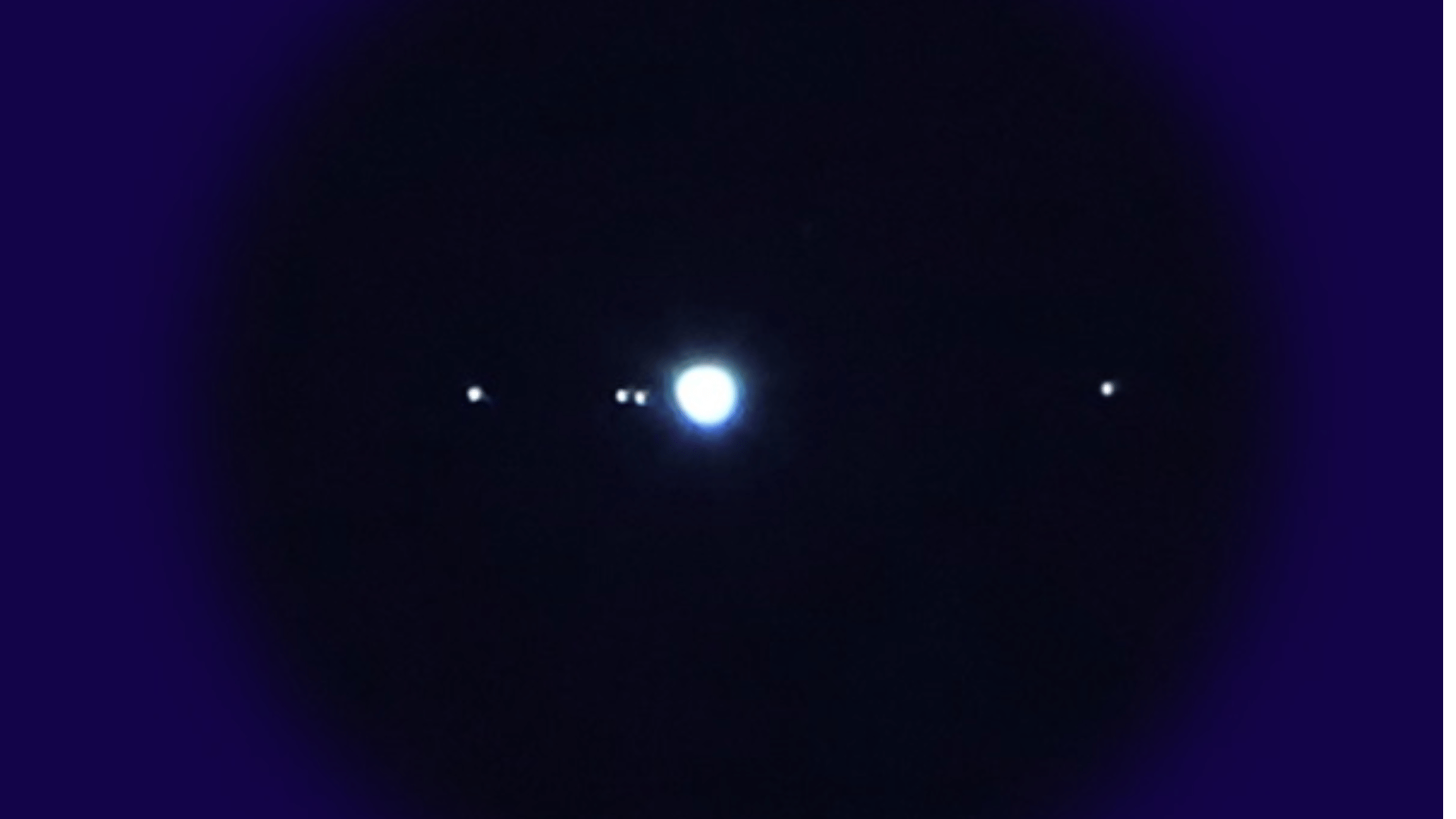

Image Source: Astronomy Magazine
Binoculars reveal Jupiter as a small, bright disk rather than just a point of light. Binoculars excel at providing rock-steady images without the vibrations common in s.
The wide field of view lets you see Jupiter in context with surrounding stars, making it easier to track the planet’s movement against the stellar background over weeks and months.
This stability makes binoculars ideal for timing moon events and appreciating the graceful orbital mechanics of the Jovian system without the complexity of telescope setup and focusing
The moons’ positions change nightly, creating an ever-shifting celestial ballet.
While you won’t see surface details on Jupiter itself, binoculars offer a stable, wide-field view that’s perfect for tracking the moons’ movements and getting your first real glimpse of the Jovian system’s dynamic nature.
2. With a Small Telescope (60–90mm aperture)
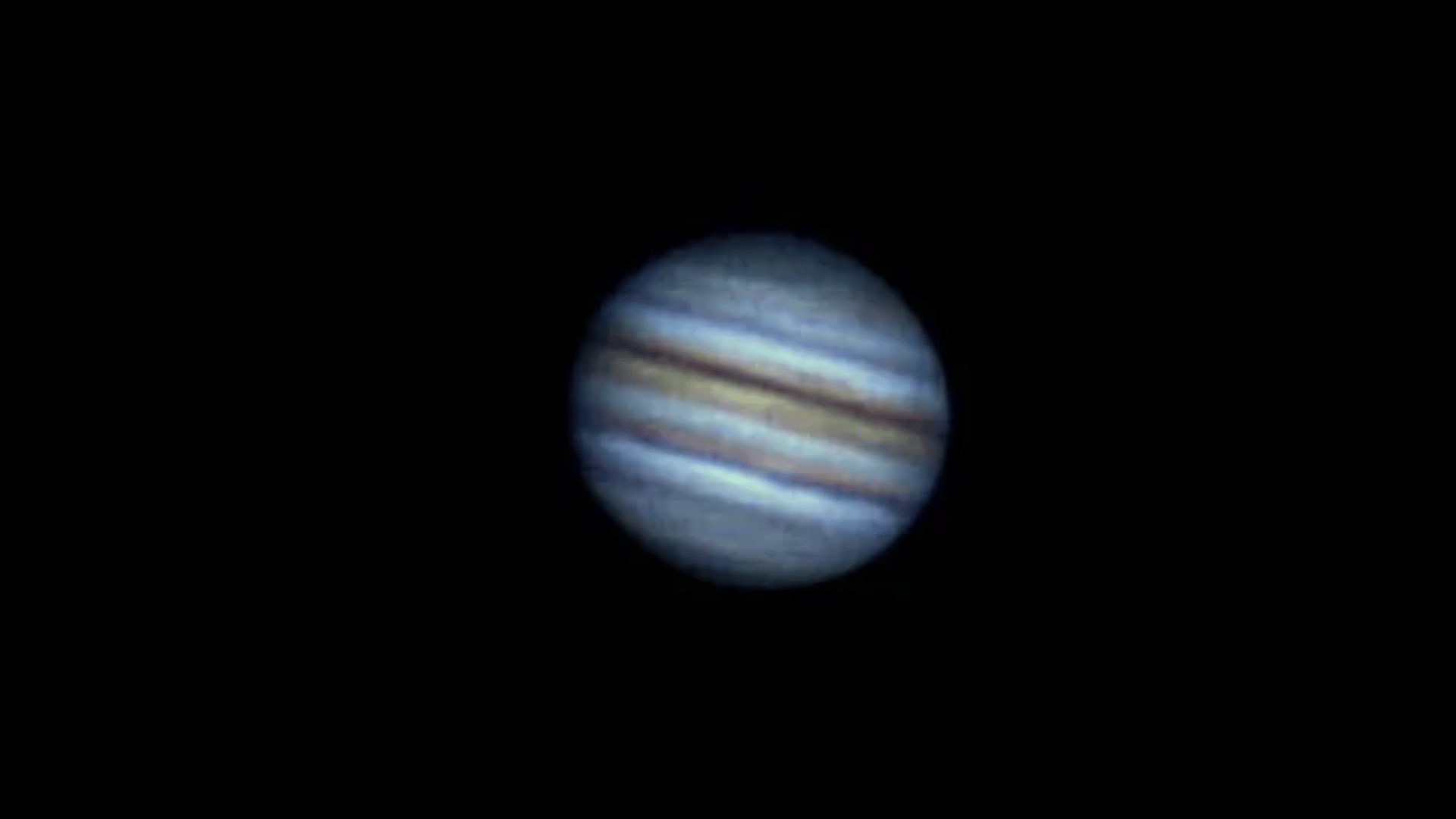

Image Source: Reddit
Small telescopes begin to reveal Jupiter’s true character. The planet shows a clear disk with visible flattening at the poles due to its rapid rotation.
Two distinct cloud bands become apparent – the dark North and South Equatorial Belts flanking the lighter Equatorial Zone.
The four Galilean moons appear as small disks rather than points, and you can observe fascinating phenomena like moon transits, eclipses, and occultations.
On nights of excellent atmospheric stability, you might catch glimpses of the Great Red Spot as a subtle oval feature.
3. With a Medium Telescope (100–200mm aperture)
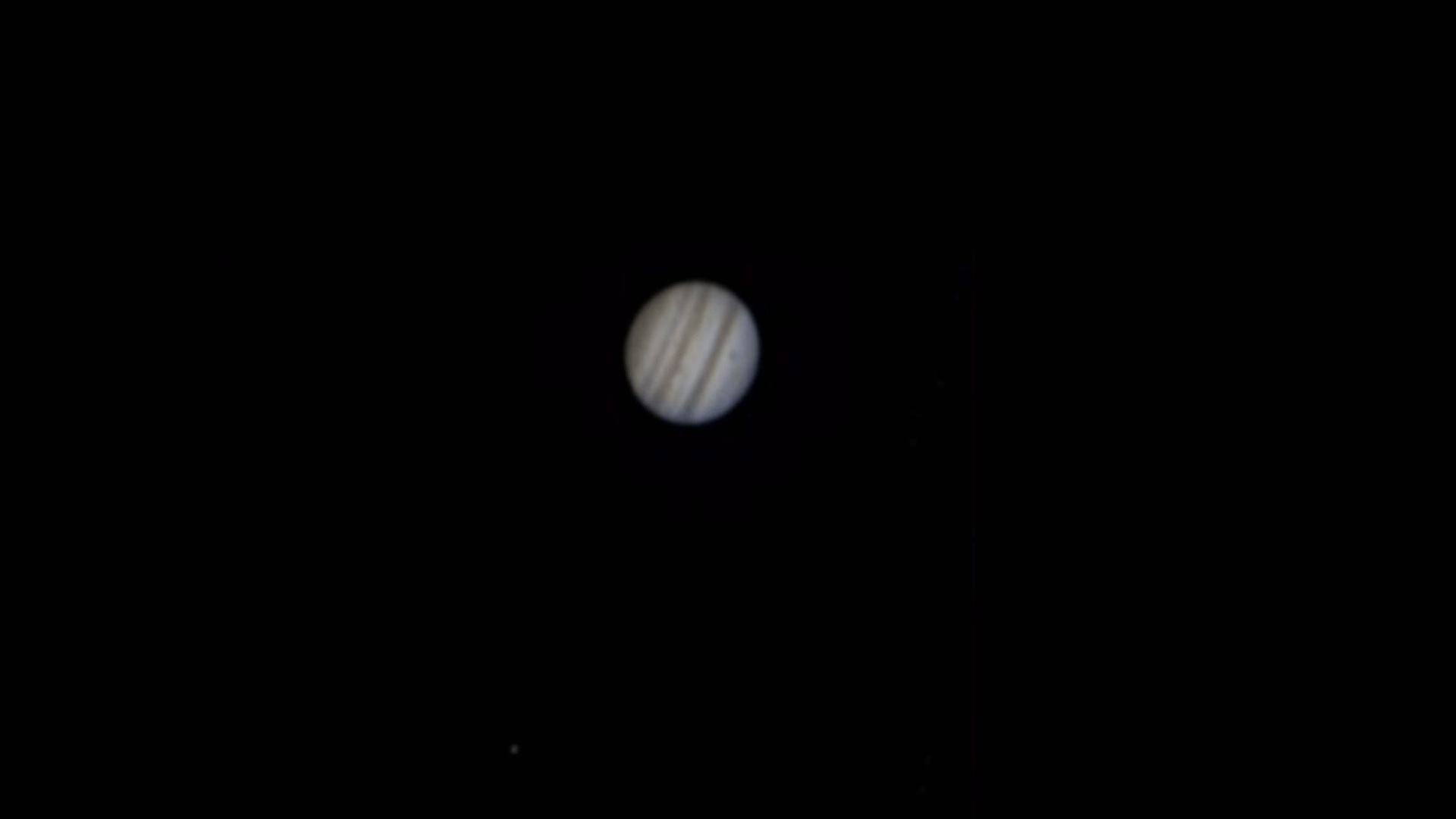

Image Source: Little Astronomy
Medium telescopes unlock Jupiter’s detailed atmospheric structure. Multiple cloud bands become visible across the planet’s surface, showing the complex belt and zone system.
The Great Red Spot appears as a salmon-colored oval when visible, alongside smaller features like white ovals, dark barges, and festoon patterns connecting Jupiter’s cloud bands.
The Galilean moons show noticeable size differences, with surface details becoming visible on the largest moon, Ganymede.
Shadow transits of moons crossing Jupiter’s face create dramatic black dots against the planet’s colorful disk.
4. With a Large Telescope (200mm+ aperture)
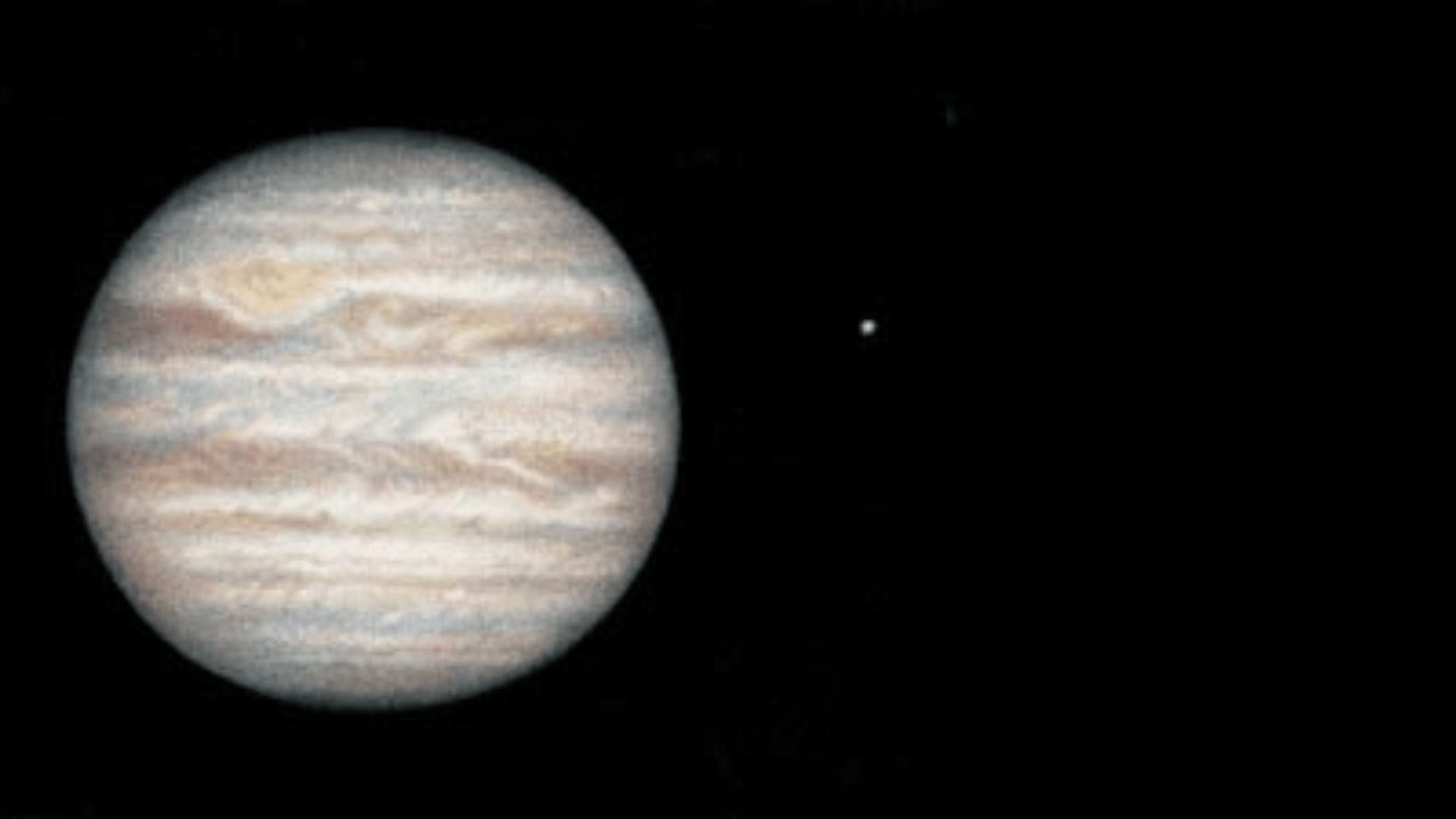

Image Source: www.ebb.rs
Large telescopes reveal Jupiter in stunning detail, showing intricate cloud structures, turbulence, and small-scale atmospheric phenomena.
The Great Red Spot reveals intricate color gradients and detailed internal features, while dozens of smaller atmospheric phenomena like white spots, brown barges, and dynamic cloud band interactions become trackable across Jupiter’s surface.
The polar regions show subtle details often missed in smaller instruments.
Galilean moons reveal surface features – Ganymede’s dark and light terrain, Io’s volcanic activity effects, and Europa’s smooth, icy surface.
Atmospheric seeing becomes the limiting factor rather than telescope capability, rewarding patient observers with breathtaking planetary views.
What Jupiter Looks Like Through a Telescope


Through a telescope, Jupiter transforms into a living world. You’ll see swirling clouds, bright moons, and dynamic weather patterns unlike anything on Earth.
- The Great Red Spot, about 10,000 miles wide, rotates every six days and changes color from pink to deep red depending on atmospheric conditions.
- The planet’s rapid 10-hour rotation means features shift noticeably during a single night of viewing.
- Jupiter’s light and dark bands wrap around its surface, representing rising ammonia clouds and deeper, warmer zones below.
- These patterns change subtly night by night, giving Jupiter a lively, ever-changing appearance.
Observation Tips for Beginners
Use these quick tips to make your observing experience sharper, steadier, and more enjoyable.
| Tip | Why It Matters |
|---|---|
| Let your eyes adjust to the darkness | Spend 10–15 minutes in dim light before observing so your eyes can detect faint details better. |
| Avoid light pollution | Go to a darker spot away from streetlights or buildings for a clearer, higher-contrast view. |
| Use color filters | A light blue filter enhances cloud belts, while a red or orange filter highlights the Great Red Spot. |
| Check the weather and see | Clear, steady air after a cold front produces the sharpest images through any telescope. |
| Observe when Jupiter is highest | Look when it’s near the top of the sky to reduce atmospheric distortion near the horizon. |
| Track Jupiter with apps | Use stargazing apps like SkySafari or Stellarium to find its position and moon transits. |
| Record your observations | Sketch or note what you see; you’ll notice new details each night and track changes over time. |
Fun Facts for Stargazers
Beyond its striking view, Jupiter also holds fun and surprising facts that make telescope watching even more exciting.
- Jupiter’s light reaches Earth in about 40 minutes, so you’re seeing it almost in real time.
- Its moons move fast: You can watch Io shift position noticeably within an hour.
- Galileo’s historic discovery of Jupiter’s moons in 1610 changed how humanity viewed the universe, and you can relive that same discovery every time you look.
Conclusion
Jupiter stands out as one of the most exciting planets to observe through any telescope. Jupiter always has something amazing to show you.
What makes Jupiter truly special is how much you can see with basic equipment. Even small telescopes reveal incredible details that will keep you coming back for more.
Jupiter offers the perfect introduction to planetary astronomy, combining easy visibility with stunning visual rewards that never get old.
Don’t just read about Jupiter’s wonders, experience them yourself! Step outside tonight, point your telescope skyward, and prepare to be amazed by the king of planets!



